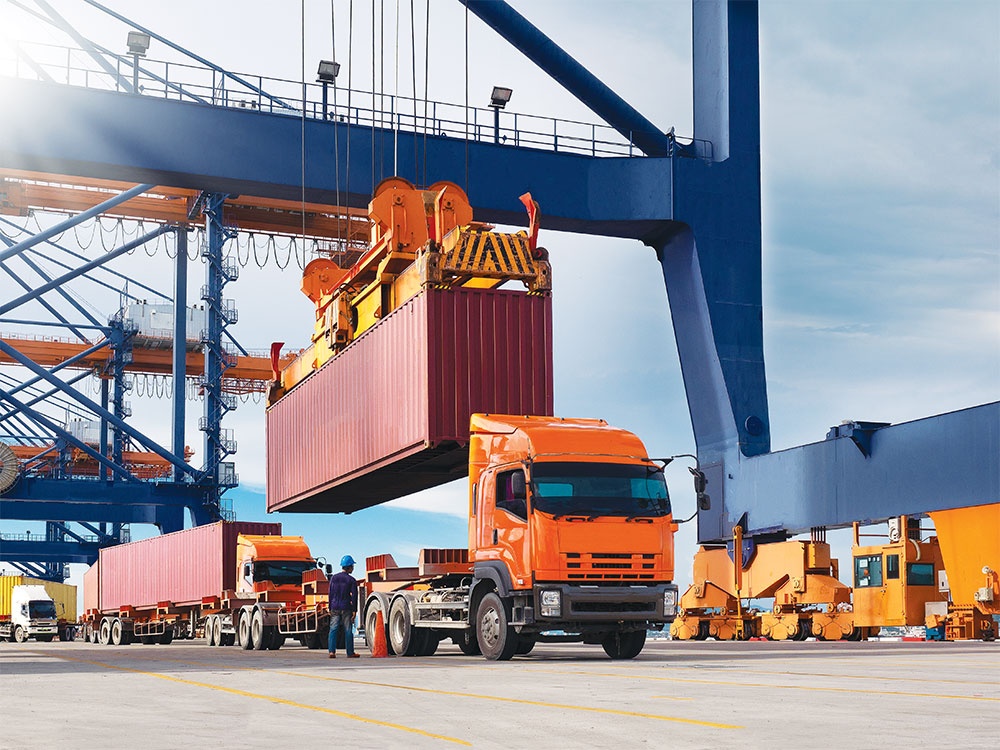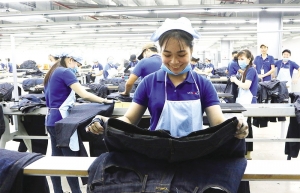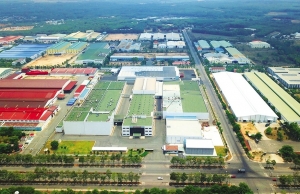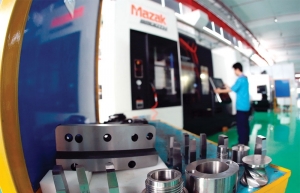Attempts made to minimise supply chain disruptions
According to Frederick Burke, senior advisor at Baker McKenzie Vietnam, to mitigate disruption risks, enterprises must understand the potential risks to supply chains from making contracts, supplier delays, natural disasters, geopolitical conflicts, and more.
 |
| Various geopolitical issues have forced businesses to reorganise and restructure their scale and production processes, Photo: Shutterstock |
“They must be prepared for everything, especially as there has been a big shift in recent years from so-called just-in-time manufacturing to just-in-case manufacturing,” Burke told VIR at the side of seminar on supply chain disruption, organised by the Hong Kong Business Association in Vietnam on September 22.
Vietnam should position itself as a player integrating deeply into the supply chain as it is a friendly country with good relationships. The whole concept of onshoring can be expanded to friend-shoring if Vietnam makes friends with other countries and mitigates the risks, according to Burke.
“Vietnamese enterprises should approach technical, training, and capacity improvement programmes implemented by domestic and global advances. Small- and medium-sized enterprises must diversify their capacity and utilise all of those incentives to be more resilient,” he said.
Le Trong Hieu, head of advisory and transaction Services at CBRE Vietnam, said that with the current volatile geopolitical market, business policies needed to be more flexible.
“When studying the benefits of Vietnam, it is necessary to look deeper. For example, a certain trade agreement could be affected for geopolitical reasons, and Vietnamese enterprises must take advantage of other agreements to replace or reduce the risk,” Hieu said.
“The economic overview of Vietnam still has bright spots, but there have always been rising problems such as geopolitics, epidemics, natural disasters, and so forth. We must have a long-term vision, and at the same time be prepared and have backups in case problems arise,” he added.
When choosing an investment location, businesses must expand their options and avoid saturated areas where free space is limited. This will lead to high land leasing prices in second-tier locations where the land fund remains large with lower prices and more opportunities.
“The most urgent thing that businesses must ready for right now is to prepare for having a good enough market for their output. The potential market is constantly changing. There will be affected segments, but trade is going well in several segments,” Hieu added.
Although the pandemic has passed its peak in Vietnam, businesses still suffer a heavy impact from the disruption of supply chains when other countries still restrict travel, not to mention the indirect impact of the Ukraine conflict, according to Hieu.
These problems have forced businesses to reorganise and restructure their scale and production process, arranging appropriate human resources to ensure safety and comply with regulations on pandemic prevention and manufacturing.
Tran Thanh Hai, deputy director general of the Ministry of Industry and Trade’s Agency of Foreign Trade, said that supply chain disruptions not only cause damage to businesses but also cause wider economic consequences.
“Due to the lack of input materials, many businesses have had to reduce their production. The limited supply of goods has also led to escalating prices, especially for essential products and healthcare services,” said Hai. “The prolonged disruption of the supply chain also affects economic growth, reduces competitiveness, and affects foreign investment and the ability of Vietnam to integrate.”
To ensure sustainable long-term development, Hai said the supply chain needed to constantly adapt to achieve the best performance and limit risk.
“Businesses must actively plan and build appropriate business strategies, and adapt when the business environment changes. Businesses need to proactively take advantage of new trade deals to penetrate the global supply chain more deeply,” Hai added.
| Elaine Chew-Special counsel, ACSV Legal
Enterprises should conduct a thorough review of their operations, evaluate areas of inefficiency, and, even for efficient areas, show such areas can improve. Given the trickle-down effects of global issues, one can never be too careful. It is sensible and a good habit to practice forward thinking. This includes diversification, drafting relevant policies and contingency plans, and conducting training sessions. This will enable backup plans to be executed smoothly to reduce the impact of disruptive events. Enterprises should also be open to injecting more capital into developing and utilising technology to enhance their business further. It is a small price to pay. This will enable businesses to remain competitive, and utilising appropriate technological solutions will give them visibility in the supply chain, enabling quicker identification of any unusual activities. Thao Nguyen-Leasing and asset management director GAW NPI
To build resilient supply chain strategies, global business leaders should consider six risk mitigations: reliable infrastructure, extensive logistic networks, cost-efficient and optimised transport routes, evaluation of the geography of supply chains, and leverage of advanced technology and social media. Based on a McKinsey survey, the two top priorities for digitalised investment are supply and demand planning. Collaboration and supplier partnerships, and ongoing risk monitoring are needed to de-risk the supply chain. Companies should develop a network of trustworthy vendors to manage interruptions and promote business continuity. By facilitating cross-functional integration and cooperation with its ecosystem of vendors, organisations become better at predicting, reacting to, and planning for the unexpected. Last but not least, sustainability within a supply chain involves investigating not just environmental concerns but social, economic, and legal responsibilities. Based on our observation, customers are demanding more sustainable products and services. |
 | Strong results supporting production Despite continuing supply chain complexities, domestic industrial production is looking promising for a brighter economic growth landscape. |
 | Developers desiring simplified IZ creation While a wave of supply chain shifts into Vietnam brings many expectations for industrial zone development, attraction of capital into this segment may be harmed if legal barriers are not promptly dealt with. |
 | Domestic companies striving to become trusted vendors of FIEs Numerous foreign-invested enterprises are looking for more Vietnamese vendors, but domestic companies are being encouraged to make improvements before they can effectively climb global supply chains. |
What the stars mean:
★ Poor ★ ★ Promising ★★★ Good ★★★★ Very good ★★★★★ Exceptional
Related Contents
Latest News
More News
- KK Group opens global flagship store in Ho Chi Minh City (January 19, 2026 | 11:52)
- Gia Lai draws over $1bn in new investment so far this year (January 19, 2026 | 11:50)
- Unlocking capital flows for strategic and suitable projects (January 18, 2026 | 09:00)
- ACV begins cargo terminal construction at Danang Airport (January 17, 2026 | 15:57)
- Viettel starts construction of semiconductor chip production plant (January 16, 2026 | 21:30)
- Bel expands Vietnam production with $19.7 million investment (January 16, 2026 | 16:07)
- ASML signals long-term commitment to Vietnam (January 16, 2026 | 12:00)
- Ho Chi Minh City starts construction of four key infrastructure projects (January 15, 2026 | 17:22)
- PIDG invests with AquaOne to expand Xuan Mai’s treated water supply to Hanoi (January 15, 2026 | 11:16)
- Vietnam ranks 38th in global AI adoption (January 14, 2026 | 16:01)



 Tag:
Tag:




















 Mobile Version
Mobile Version